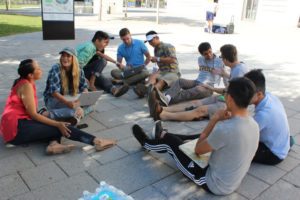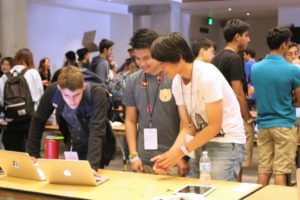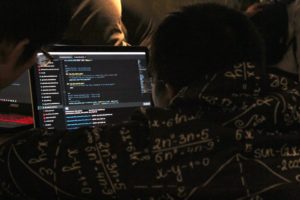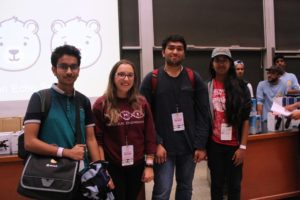Hacking Event Organization Logistics with Custom Wristbands + Badges
10/23/2017
Managing event logistics for a large crowd is complex. How do you keep everyone organized? Regulate entrances and exits? Make sure folks get fed? Easily identify guests, staff, and VIPs?
Hardwired to find and create great answers to existing problems, the Cal Hacks event planning team identified the perfect solution for their hackathon: printed wristbands and event badges.
Before we dive into how something as low-tech as printed wristbands and badges fit into the execution of Cal Hacks 4.0, an annual collegiate hacking competition that has produced things like mind-controlled drones, we’re guessing you’re wondering what, exactly, a hackathon is.
What is a Hackathon?

A hackathon is an event in which software programmers and designers gather to bring an idea to fruition through technology. Participants get together to share ideas, gain experience, and use their knowledge to create a product. More commonly used by technology companies to develop innovative products, hackathons have been adopted by universities. Intensely collaborative, Hackathons afford new coders the opportunity to gain real-life experience and make connections.

A collegiate hackathon may include hundreds (or even thousands) of hackers comprised of small teams. Groups are encouraged to join forces to build a solution for a specific idea that excites them. The goal is to have a finished hack (such as a mobile app or robot) within a one or two-day period. There’s usually no sleep and lots of snacking involved, and since it’s a competition, there are prizes!
About Cal Hacks

Located in the Silicon Valley region, UC Berkeley is one of the top computer science schools in the country. In 2014, it hosted Cal Hacks 1.0, the first Bay Area collegiate hackathon. An annual, non-profit hackathon open to undergraduates from all universities, Cal Hacks has become the largest on the west coast. Brandon Berookhim, part of the event’s planning team, told us it’s a great opportunity for hackers to learn a new coding language and then use that language to complete a project ready for judging within 36 hours.

Earlier this month, 2,500 hackers, sponsors, and volunteers convened at California Memorial Stadium for Cal Hacks 4.0. The competition featured prizes for first, second, and third place and a host of other prizes. Sponsors also awarded prizes to hackers who best used their API (application program interface) and/or software. For example, the Cal Hacks 4.0 hacker team that created the Best Re-Imagination of Markets by NASDAQ won an internship at NASDAQ and a trip to NASDAQ headquarters. In addition, the team that won Best Use of Blackrock API scored drones, while the winners of Best Use of Azure or Microsoft Tech won Microsoft Surface laptops and Razor Scooters. Additionally, everyone learned new tech skills, built a project from start to finish, and walked away with something notable to put on a resume.

Previously, hackers were allowed to have ideas but could not start on them until the hackathon began. However, Cal Hacks 4.0 unveiled three new programs to make the event more approachable to student hackers of all stages. The organization describes the Cubstart program as “a beginner hacker program to make hackathons less intimidating and more accessible to everyone.” Finally, the Cal Hacks Fellowship program supports a handful of teams to continue projects beyond the event. Finally, Continuation Projects enable experienced hackers to bring a project on which they have been working. In short, Cal Hacks 4.0 threw open its doors so collegiate hackers and their creative ideas had room to percolate, resolve, and become a reality.
How Event Badges and Wristbands Kept It All Organized
Though futuristic and forward-looking, a hackathon still involves a bunch of human beings. Everyone needs to check in and check out, eat food, and come and go from the event. To organize it all and differentiate between mentors, sponsors, hackers, and volunteers, the Cal Hacks 4.0 team ordered custom conference badges and wristbands!

The wristbands helped identify everyone part of the event and made re-entry as simple as a glance at a wrist. The badges, Brandon explained, made it easy to differentiate who was who, and they also helped manage feeding everyone. The badge fronts spelled out whether a person was a mentor, sponsor, or hacker. In contrast, the backs were printed with checkboxes for the various meals. When someone arrived to nosh, the corresponding box would be checked so that volunteers would know who had eaten. The badges also indicated to which meal group the wearer belonged. In short, the badges worked like a boarding pass, except instead of boarding with your group, it was time to eat!
We’re thrilled to be a part of Cal Hacks and are looking forward to Cal Hacks 5.0!
Back to blog Back to top



